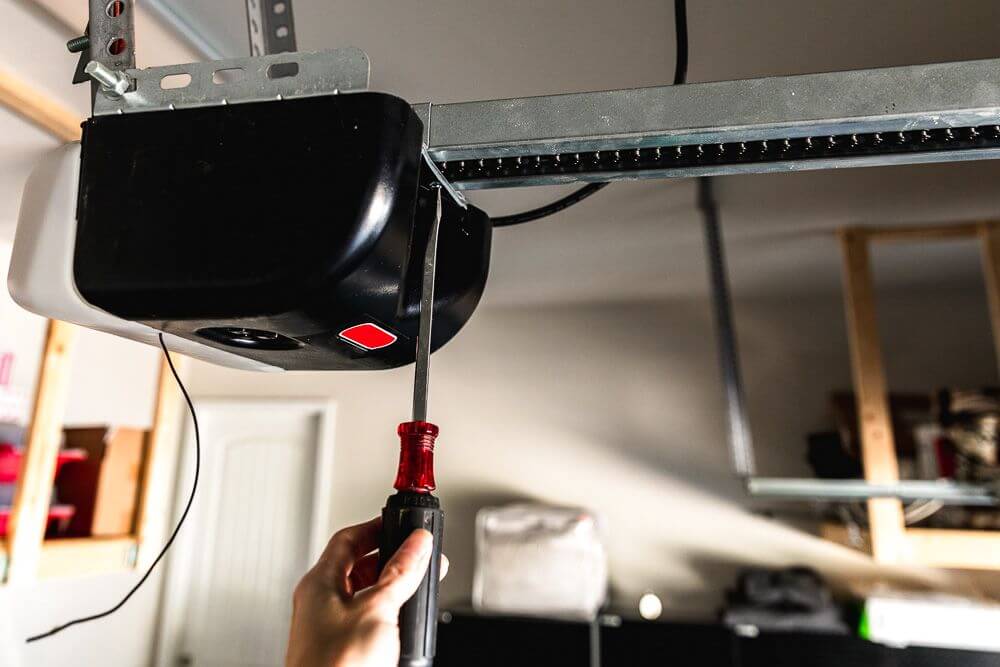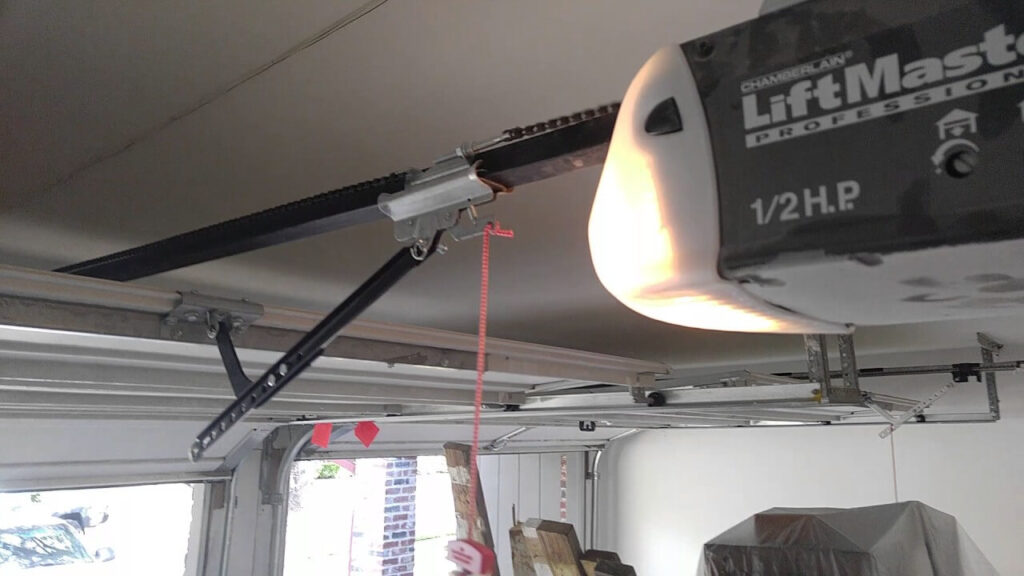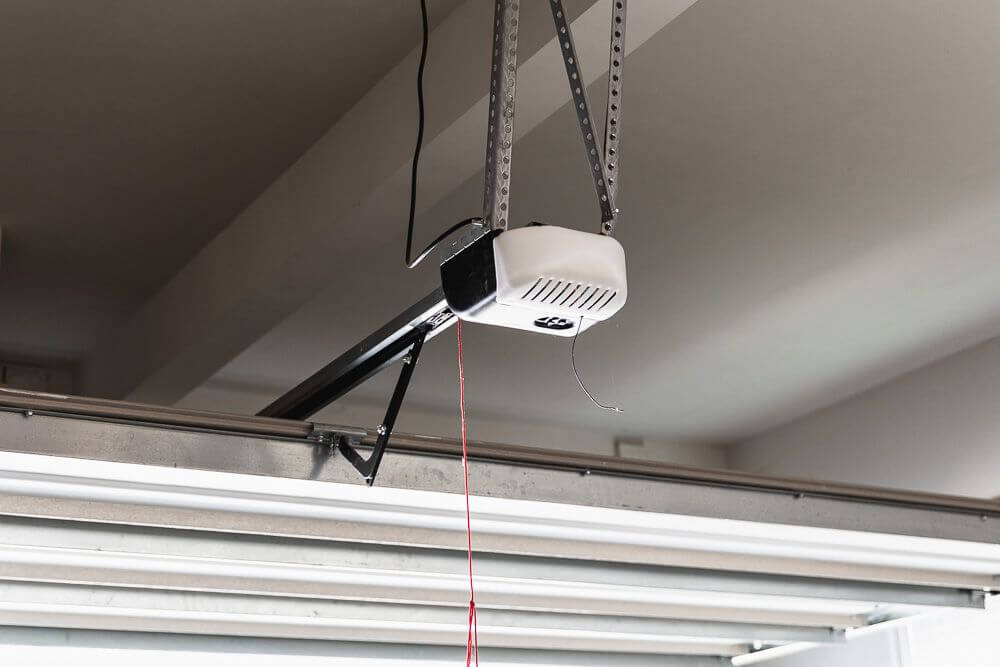
Your garage door opener is the unsung hero of your daily routine. It dutifully opens and closes, allowing you to come and go without a second thought. That is, until it decides to throw a tantrum and refuse to cooperate. When that happens, it’s not just an inconvenience; it’s a disruption.
In this in-depth guide, we’ll explore the ins and outs of garage door opener troubleshooting and repair. From the most common issues to advanced problems, we’ve got you covered with solutions, tips, and preventative maintenance techniques to keep your garage door opener running smoothly.
Understanding Your Garage Door Opener
Before diving into troubleshooting, let’s familiarize ourselves with the different types of garage door openers, as they each have their unique characteristics and potential problems.
Types of Garage Door Openers
- Chain Drive Openers: These are the most common and budget-friendly options. They use a chain to pull or push the door along a track. While robust, they can be noisy.
- Belt Drive Openers: Similar to chain drives, but they use a belt made of rubber or reinforced with steel. These are significantly quieter but cost more.
- Screw Drive Openers: These use a threaded steel rod to move the trolley that opens and closes the door. They require less maintenance but can be noisy.
- Direct Drive Openers: The motor itself moves along the stationary chain embedded in an overhead rail. These are quiet and have fewer moving parts.
Common Garage Door Opener Components
To effectively troubleshoot and repair your garage door opener, you need to understand its key components:
- Motor: The heart of the opener, it provides the power to lift and lower the door.
- Trolley: The mechanism that carries the door along the track.
- Rail: The long track where the trolley moves, guiding the door.
- Remote Control: The handheld device that sends signals to open and close the door.
- Wall Switch: A control panel mounted on the wall near the garage entrance for manual operation.
- Safety Sensors: Infrared sensors located near the floor on each side of the door that prevent it from closing if an object is in the way.
- Rollers: Wheels that help the door move smoothly along the tracks.
- Springs: Torsion and extension springs counterbalance the weight of the door, making it easier to open and close.
Now that we’re on the same page, let’s tackle the most common garage door opener problems.
Common Garage Door Opener Problems and Solutions

The Silent Treatment: The Opener Isn’t Responding
Issue: Your garage door opener isn’t responding to your remote control or wall switch.
Solution:
- Check the Power: First and foremost, make sure your garage door opener is plugged in and that the outlet is working. This may seem obvious, but it’s a common oversight.
- Change the Batteries: If your remote control isn’t working, replace the batteries. Low battery power can be the root of the problem.
- Reprogram the Remote: Over time, the remote control may lose its connection with the opener. Consult your owner’s manual for instructions on reprogramming it.
- Inspect the Circuit Breaker: A tripped circuit breaker can render your opener lifeless. Check your circuit breaker panel and reset it if needed.
The Half-Hearted Lift: The Door Won’t Open or Close Fully
Issue: Your garage door starts its journey but refuses to open or close entirely.
Solution:
- Lubrication: Apply a high-quality garage door lubricant to the rollers, hinges, and tracks. This can significantly improve the smooth operation of the door.
- Track Alignment: Misaligned tracks can cause your door to malfunction. Inspect the tracks for any gaps or irregularities and realign them if necessary.
- Sensor Alignment: Many modern openers have safety sensors that can get misaligned. Ensure that they are pointed directly at each other and not obstructed.
- Spring Tension: If you have a torsion spring system, check for any tension issues. Do not attempt to fix it yourself if you’re not experienced; it can be hazardous. In such cases, it’s best to call in a professional.
The Mystery Noise: Strange Sounds When Operating
Issue: Your garage door opener is making unusual, unsettling noises.
Solution:
- Tighten Hardware: Loose nuts and bolts can be the root of your noisy problems. A quick tightening session can often do the trick.
- Replace Worn Rollers: Worn-out rollers can creak and groan as they move along the tracks. Consider replacing them with nylon rollers, which are quieter and more durable.
- Silence the Chain: If you have a chain-driven opener, consider replacing it with a belt-driven one. Belt-driven openers are much quieter.
- Garage Door Opener Lubrication: Properly lubricate all moving parts, such as the rollers, hinges, and springs. This reduces friction and noise, making your opener run quietly and smoothly.
Advanced Troubleshooting and Repair
For those of you who are feeling more adventurous and ready to tackle bigger issues, here are some advanced garage door opener troubleshooting tips.
The Remote Control Conundrum
Issue: Your remote control works, but your wall switch doesn’t, or vice versa.
Solution:
- Check Wall Switch Wiring: Open the wall switch to ensure that the wires are properly connected. Sometimes a loose wire is all that’s standing between you and garage door happiness.
- Remote Signal Interference: Nearby devices like baby monitors or cordless phones can interfere with your remote signal. Relocate these devices or switch to a different frequency to avoid signal conflicts.
Door Reversal Problems

Issue: Your garage door reverses as soon as it hits the floor.
Solution:
- Adjust the Close Limit: Your opener has a close limit switch that might need tweaking. Consult your manual for instructions on adjusting it to the correct setting.
- Check Safety Sensors: Misaligned safety sensors often trigger the reversal. Ensure they’re correctly aligned and free from any obstructions.
- Replace the Safety Sensors: If your sensors are damaged, it’s best to replace them. Safety is a top priority when it comes to garage doors.
The Infamous Disconnect Pull
Issue: Your garage door keeps disconnecting from the opener, making manual operation necessary.
Solution:
- Broken Springs: Broken or worn-out springs can lead to the disconnect issue. If you suspect spring problems, it’s essential to consult a professional for replacement.
- Adjust Force Setting: Modern openers have a force setting control. Adjust it to the right level, and your door should stay connected to the opener without any problems.
- Cable Troubles: Examine the cables for any fraying or damage. If you notice any issues, it’s time to replace them. Damaged cables can compromise the safety and operation of your garage door.
Regular Garage Door Opener Maintenance
Prevention is better than cure. Keeping your garage door opener in tip-top shape can prevent most of these issues. Here are some maintenance tasks to add to your checklist.
Lubrication Schedule
Regularly lubricate the following parts of your garage door:
| Part | Lubrication Schedule |
| Rollers | Every 6 months |
| Hinges | Every 6 months |
| Springs | Yearly |
| Tracks | Yearly |
| Chains/Belts | Yearly |
Proper lubrication reduces friction, extends the life of your opener, and minimizes noise.
Balance Check
A properly balanced garage door reduces strain on the opener. To check the balance:
- Disconnect the opener.
- Manually lift the door halfway.
- If it stays in place, it’s balanced. If not, call in a professional for adjustment.
Maintaining a balanced door ensures the opener operates efficiently and extends its lifespan.
Safety Sensor Test
Test the safety sensors monthly:
- Close the door.
- Wave an object in front of the sensors.
- The door should immediately reverse. If not, clean and realign the sensors.
Properly functioning safety sensors prevent accidents and protect your loved ones.
Visual Inspection
A quick visual inspection can go a long way. Check for:
- Rust and corrosion: Address rust spots promptly to prevent further damage.
- Worn-out parts: Replace any worn-out or damaged components.
- Loose screws: Tighten any loose screws and bolts.
- Damaged cables: Damaged cables are a safety hazard. Replace them as needed.
Regular visual inspections can help you catch potential issues before they become major problems.
Final Words
Fixing your garage door opener isn’t rocket science, but it does require a bit of elbow grease and some troubleshooting skills. With this guide, you’re well-equipped to tackle most common problems and keep your garage door opener running smoothly. Just remember to stay safe and call in a professional for the more complex issues. Now, go ahead and show that cantankerous garage door who’s boss!
With the knowledge and solutions provided in this comprehensive guide, you can keep your garage door opener in top-notch condition, ensuring it serves you faithfully for years to come. So, roll up your sleeves, grab your tools, and let’s get your garage door opener back in action!
Frequently Asked Questions (FAQs) – Garage Door Opener Troubleshooting and Repair
Got questions about troubleshooting and repairing your garage door opener? Check out our comprehensive FAQs for answers to common queries.
1. My garage door opener isn’t responding to the remote control. What should I do?
Solution: First, check if the opener is plugged in and the outlet is working. If that’s not the issue, try replacing the batteries in the remote control. You may also need to reprogram the remote according to your owner’s manual.
2. Why does my garage door start but not open or close fully?
Solution: This issue may be due to misaligned tracks, worn-out rollers, or a problem with the garage door springs. Lubricating moving parts and checking for any obstructions can often resolve this problem. If the springs are an issue, it’s best to consult a professional for replacement.
3. How can I fix the strange noises my garage door opener is making?
Solution: Noisy garage door openers can often be quieted by tightening loose hardware, replacing worn rollers, or switching to a quieter belt-driven opener. Properly lubricating moving parts can also reduce friction and noise.
4. My garage door remote works, but the wall switch doesn’t, or vice versa. What’s the problem?
Solution: If your remote control is working but the wall switch isn’t, check the wiring of the wall switch. Sometimes, a loose wire can be the issue. If the remote control is malfunctioning, interference from nearby devices, like baby monitors or cordless phones, can be the culprit. Consider relocating these devices or using a different frequency for your opener.
5. Why does my garage door reverse as soon as it touches the floor?
Solution: This problem could be due to an improperly adjusted close limit switch, misaligned safety sensors, or damaged safety sensors. Adjusting the close limit switch, realigning the safety sensors, or replacing damaged sensors can often resolve the issue.
6. How can I prevent my garage door from disconnecting from the opener during operation?
Solution: Garage doors disconnecting from the opener may result from broken springs, incorrect force settings, or damaged cables. Broken springs should be replaced by a professional. Adjust the force setting according to your opener’s manual, and replace damaged cables to ensure the door remains connected to the opener.
7. How often should I lubricate my garage door opener’s moving parts?
Solution: Regular lubrication is essential for a smoothly operating garage door. Here’s a general schedule:
- Rollers and hinges: Every 6 months.
- Springs: Yearly.
- Tracks and chains/belts: Yearly.
Proper lubrication reduces friction, minimizes wear and tear, and prevents unnecessary noise.
8. How can I check the balance of my garage door?
Solution: To check the balance of your garage door:
- Disconnect the opener.
- Manually lift the door halfway.
- If it stays in place, it’s balanced. If not, consult a professional to adjust the balance, ensuring efficient operation and an extended opener lifespan.
9. How do I test the safety sensors of my garage door opener?
Solution: To test the safety sensors:
- Close the door.
- Wave an object (not your body) in front of one of the sensors.
- The door should immediately reverse its movement. If it doesn’t, clean and realign the sensors to ensure they’re working correctly.
10. What should I look for during a visual inspection of my garage door opener?
Solution: During a visual inspection, check for:
- Rust and corrosion.
- Worn-out parts.
- Loose screws and bolts.
- Damaged cables.